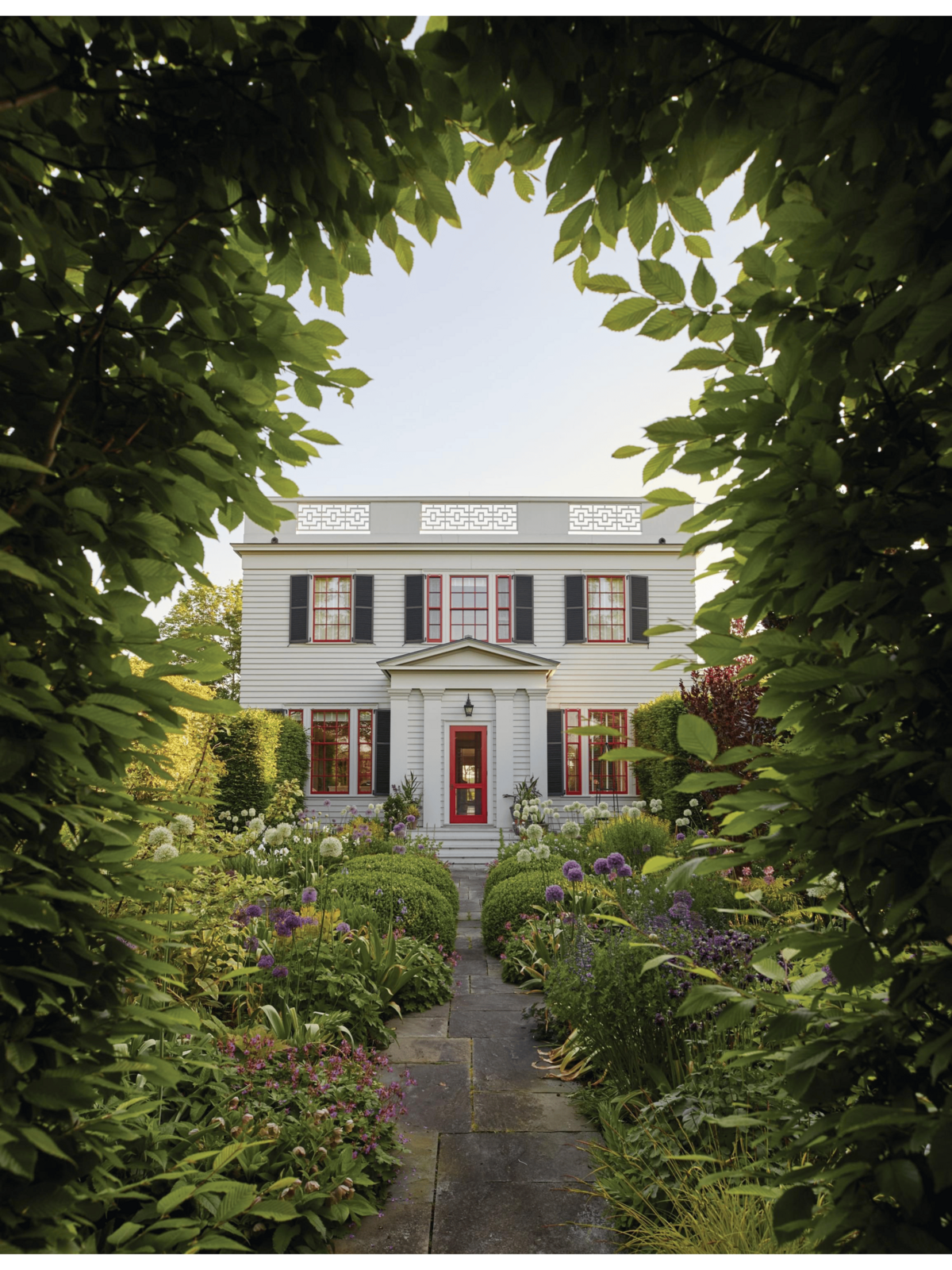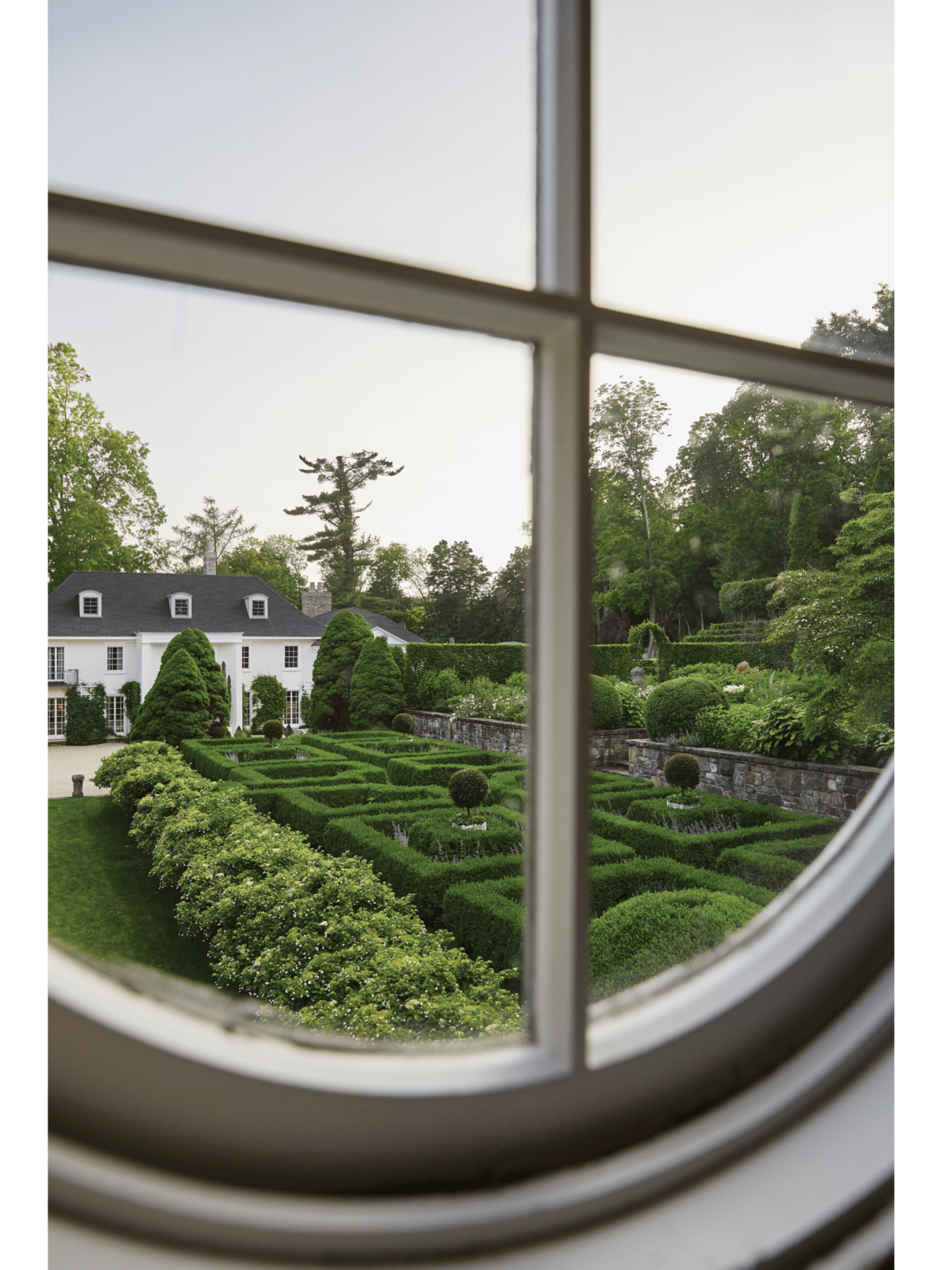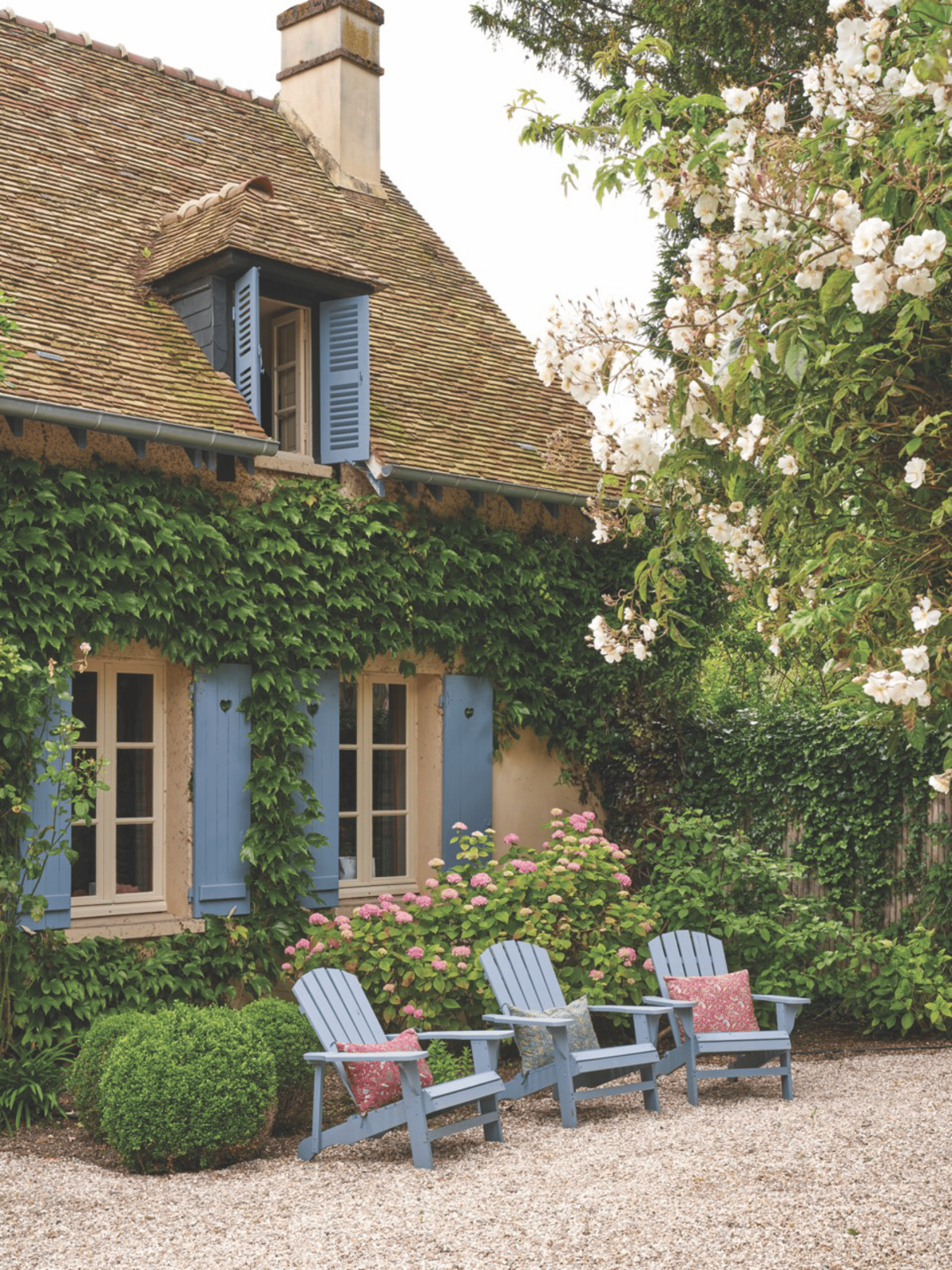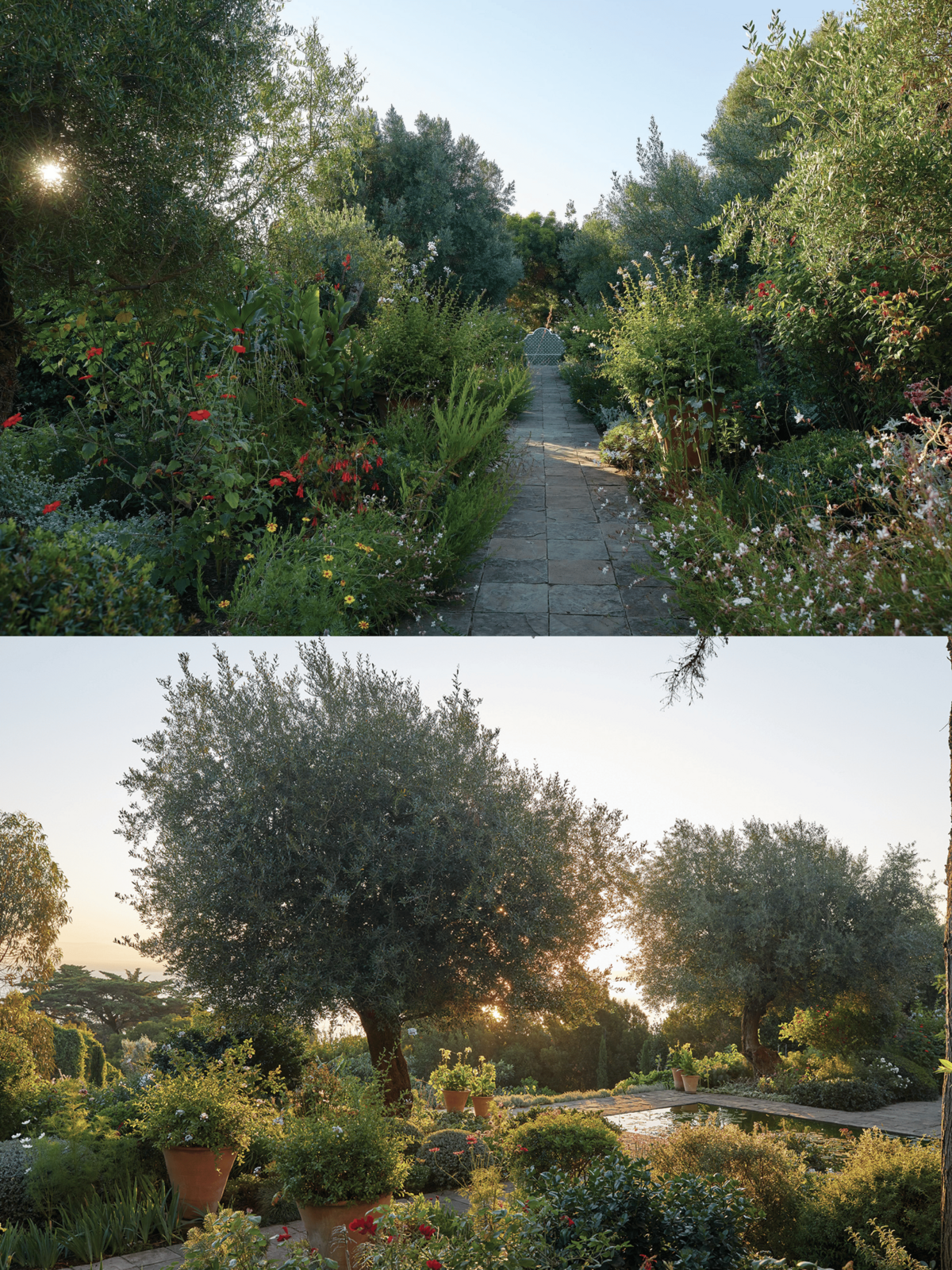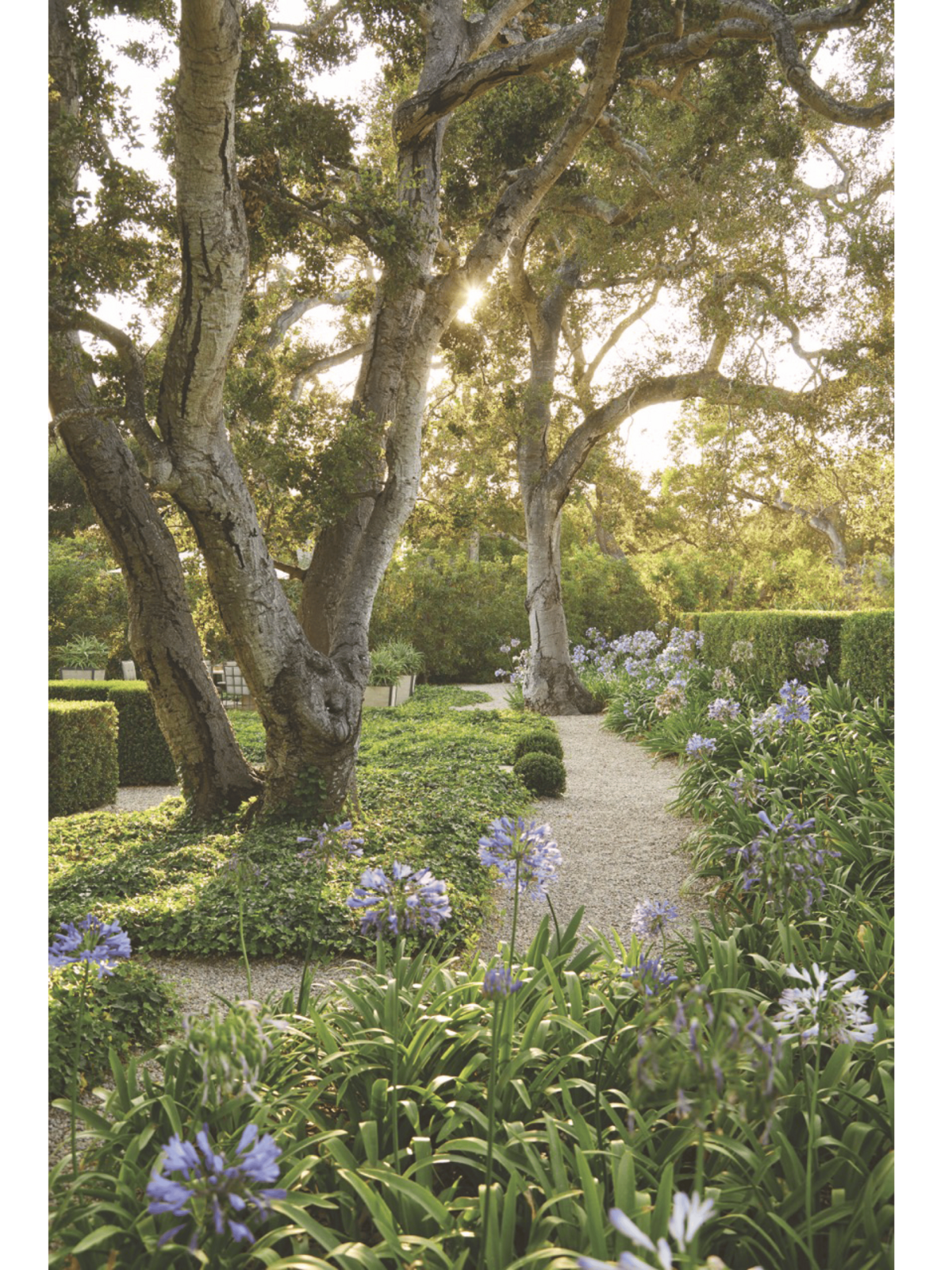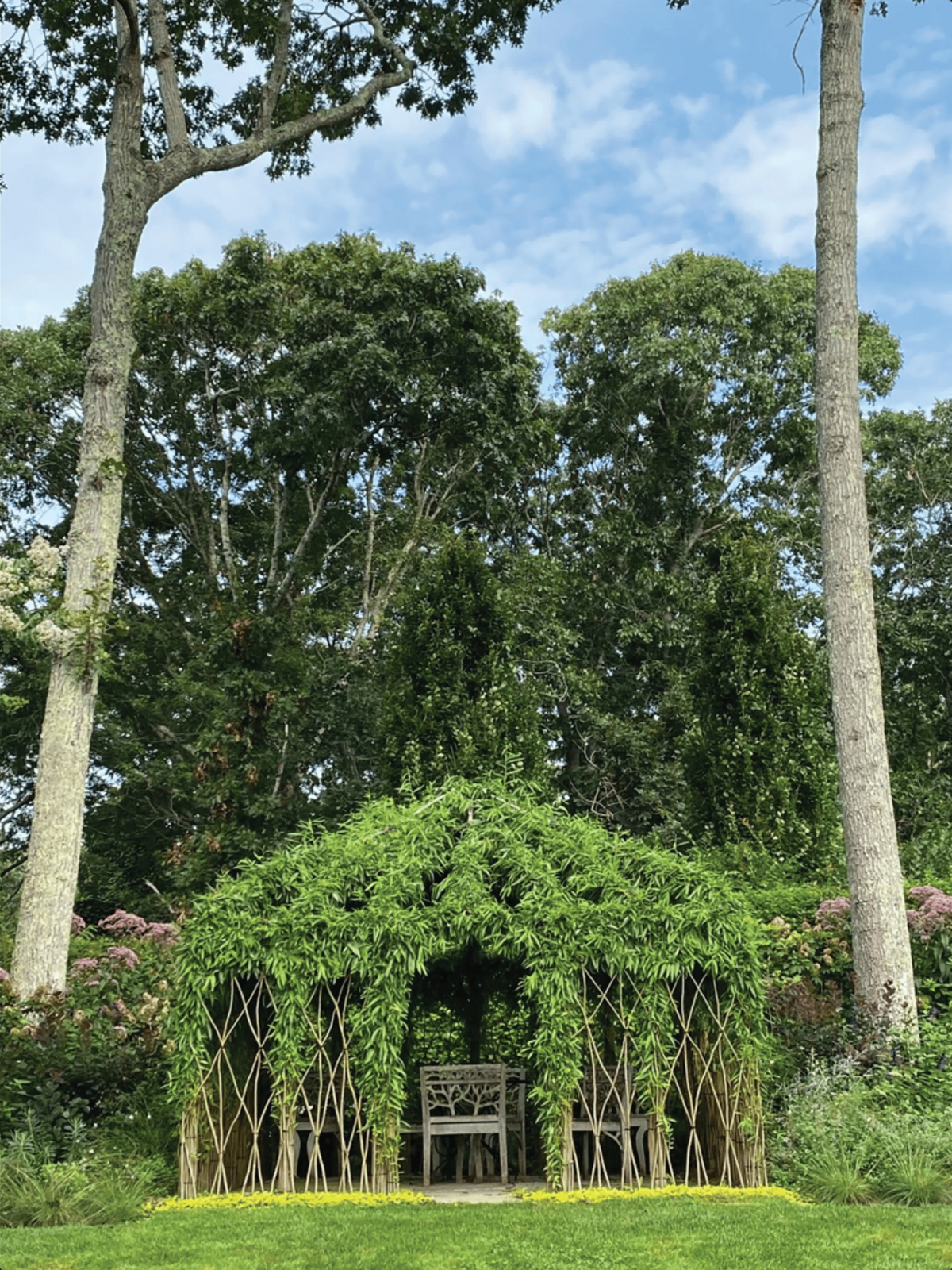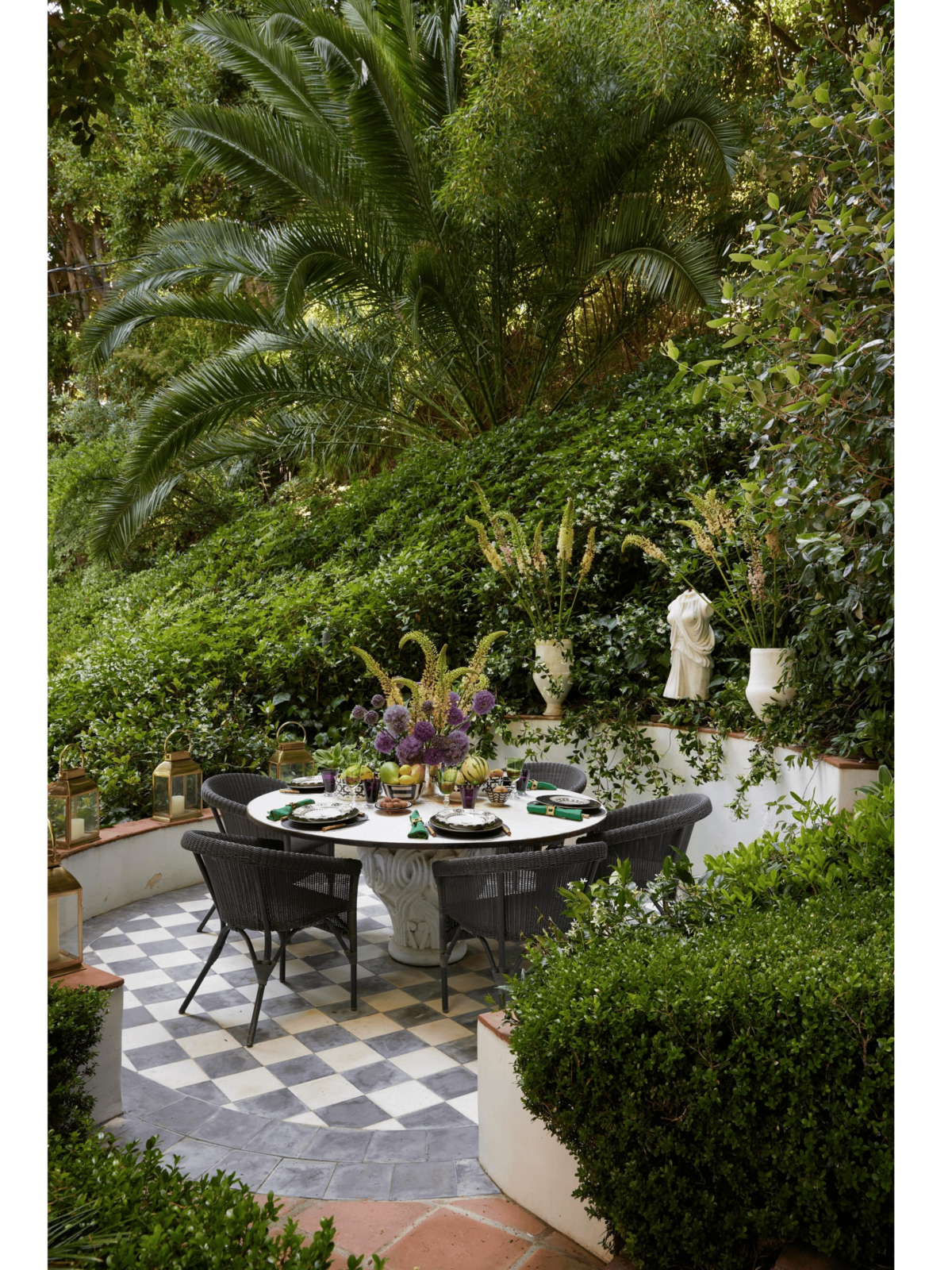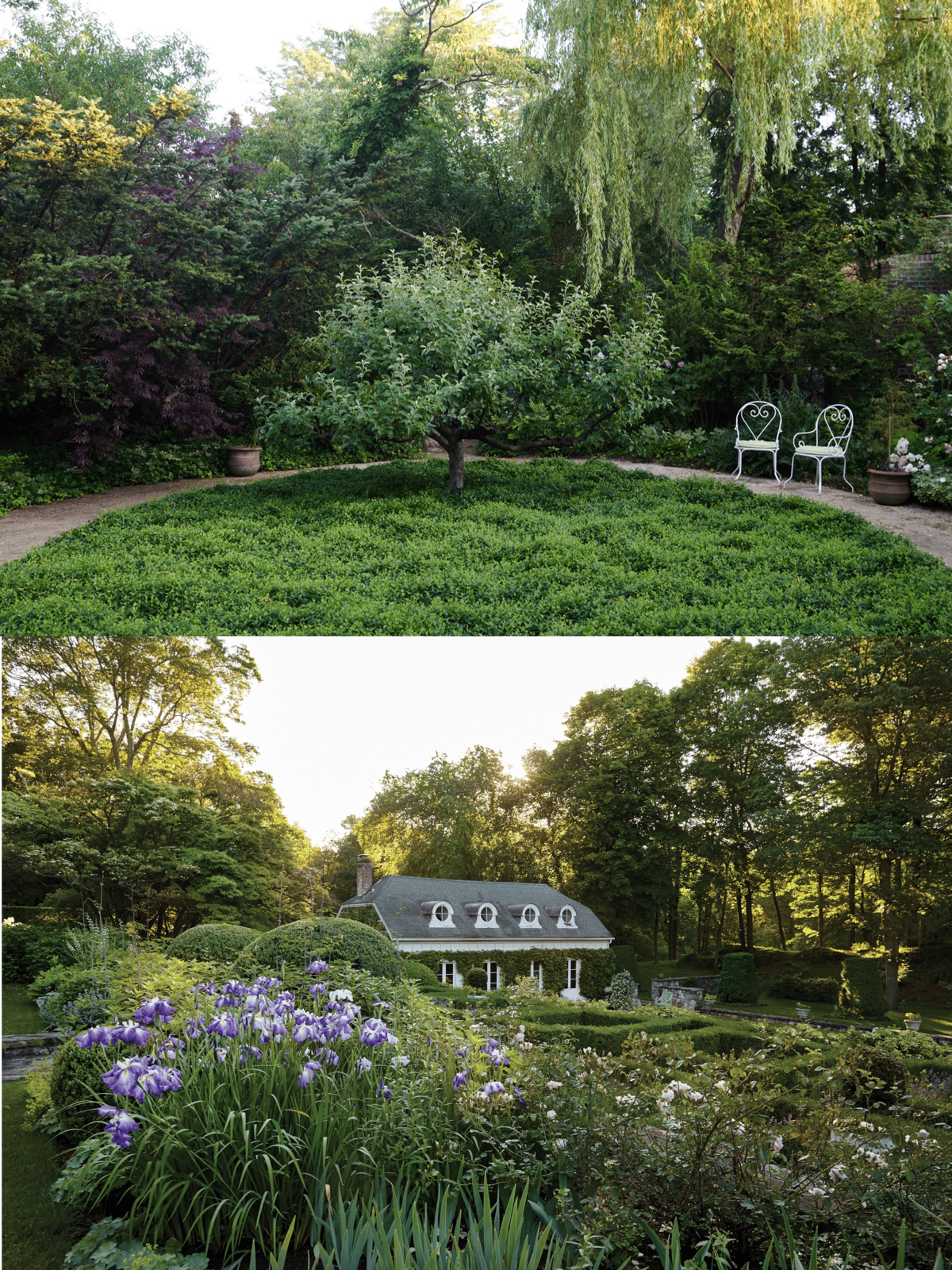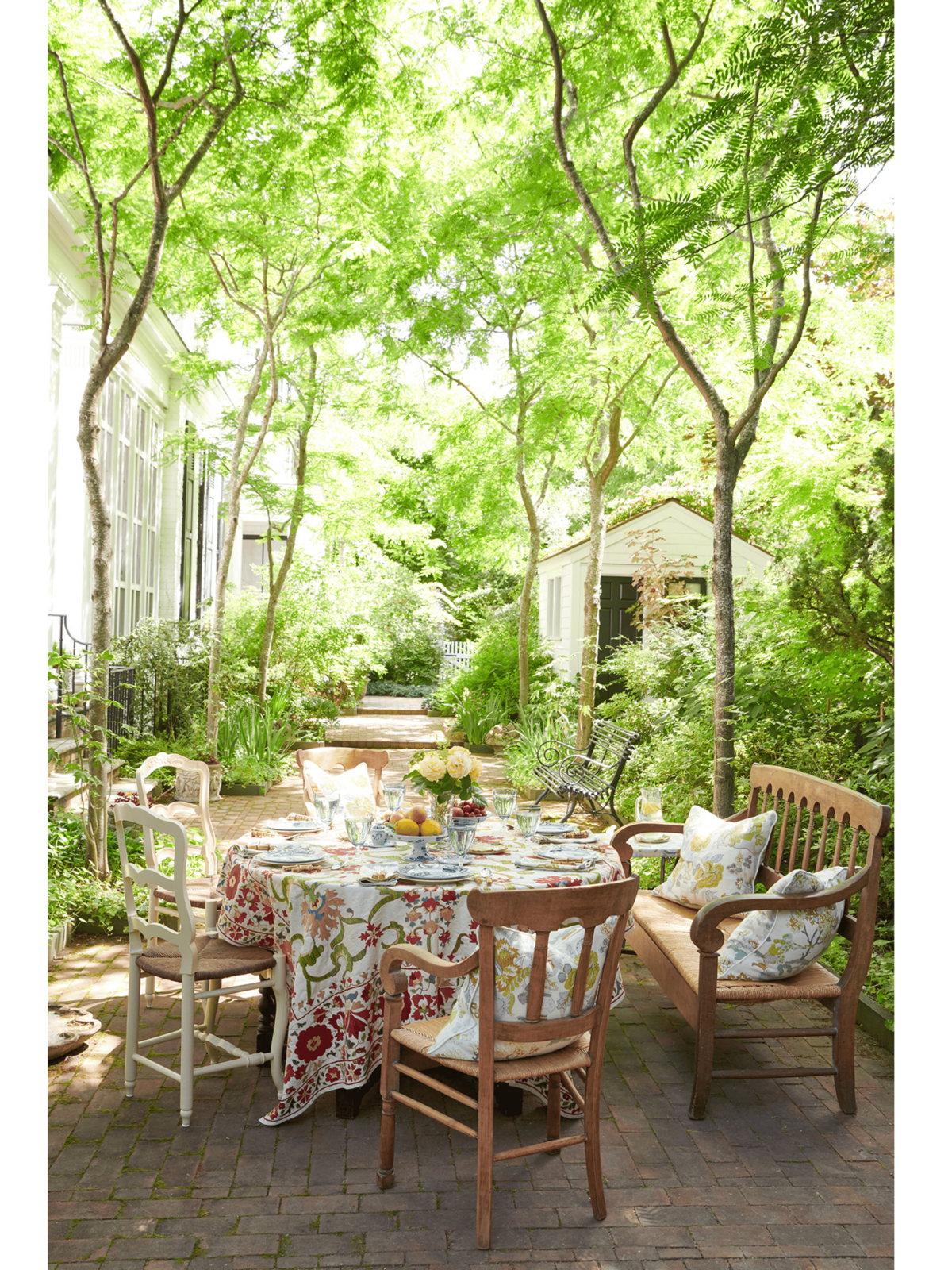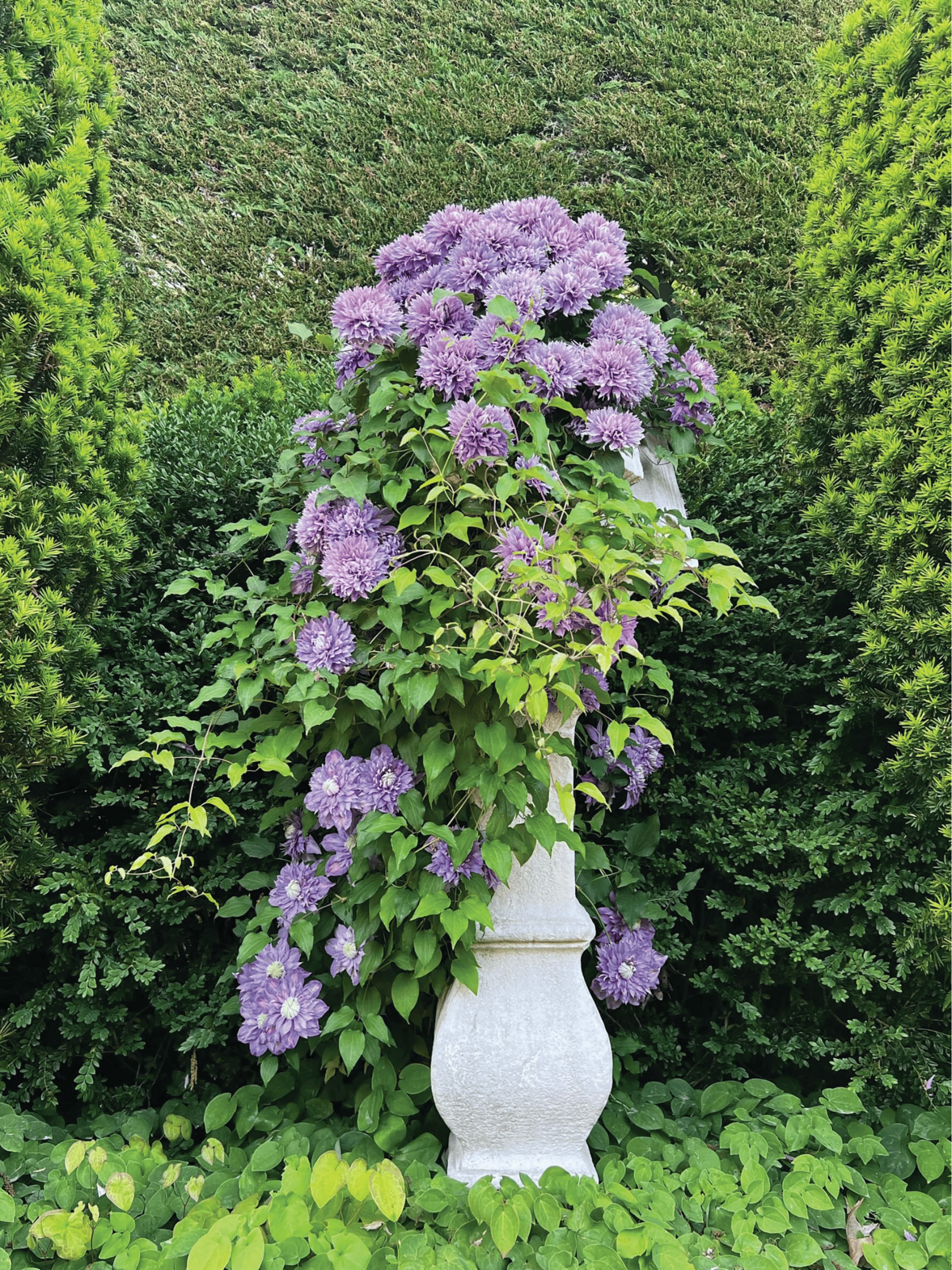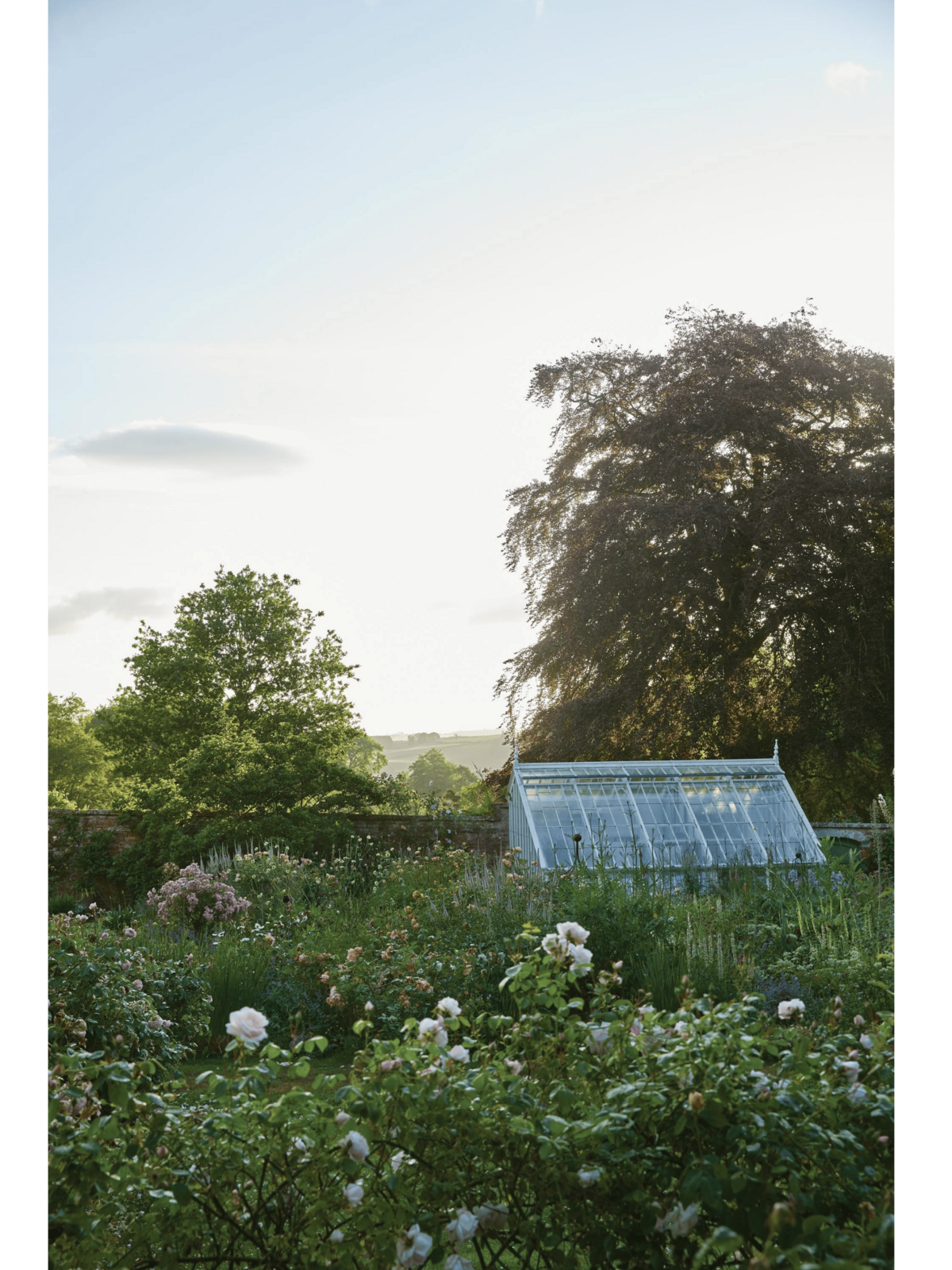When looking at the work of the world’s best interior designers, it becomes clear that designing a garden isn’t so different from designing a house. “My approach to gardening and decorating is similar,” the renowned American designer Bunny Williams has said. “I believe that both require a strong structure as a starting point.”
At her home in Falls Village, Connecticut, Williams created that structure with boxwood hedges, then laid out her vegetable garden with the geometric precision of a floor plan. The result is a series of plots that feel like rooms in which the wild and the prim coexist.
François Catroux, who worked with everyone from Mila Schön to Marie-Chantal of Greece, was also a boxwood enthusiast. In his Provence courtyard, precisely trimmed shapes were placed in terra-cotta planters, while allées of trees and laurel brought order and elegance to the greenery beyond.
Order is key, too, for Veere Grenney, the U.K.-based decorator whose garden is in Tangier, Morocco. Canna lilies, plumbagos, roses, and begonias run riot—but only alongside carefully placed walkways, ponds, and ziggurat staircases.
And then there’s color. That’s Katie Ridder’s focus for her garden in Millbrook, New York, as it often is in her exuberant interiors. Did the lamb’s ear, dahlia, amaranth, and heuchera work together? “It’s like painting a painting,” she says. “I’m thinking about how much purple I have.... It’s controlled chaos.”
Dara Caponigro’s new book, Glorious Gardens: Private Edens of the World’s Leading Interior Designers, gathers gardens by Grenney, Catroux, Ridder, Pierre Sauvage, Stephen Sills, and more. While gardening and interior design require different sensibilities—one is a negotiation with nature; the other, with space—a good designer can excel at both.
Late summer, says Sauvage, is the perfect time to begin. “What I love is imagining the colors of the plants and flowers, planning when everything starts to bloom, creating the compositions.” —Elena Clavarino
Elena Clavarino is the Senior Editor at AIR MAIL

